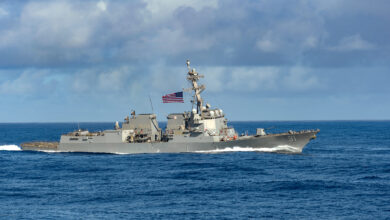Lockheed Martin wins $110 million contract to develop Gray Wolf semi-autonomous cruise missiles
Lockheed Martin has been awarded a $110 million contract to develop and demonstrate Gray Wolf networked tactical cruise missiles, a U.S. Department of Defense press release said.
“Lockheed Martin Missiles and Fire Control, Dallas, Texas, has been awarded an $110,000,000 indefinite-delivery/indefinite-quantity contract for the gray wolf science and technology demonstration effort,” the release said on Monday, December 18. “The contract provides for the design, development, manufacture, and testing of prototype-affordable cruise missiles to advance networked collaborative operations technologies for defeat of enemy integrated air defense systems.”
The missile will be developed in Dallas, Texas, and the contract completion date is set for December 17, 2022.
The Air Force Research Laboratory at Eglin Air Force Base, Florida, is the contracting activity.
Update December 21 Northrop Grumman also awarded $110 million contract to develop Gray Wolf semi-autonomous cruise missiles
Gray Wolf semi-autonomous cruise missile program
A March presolicitiation on the FedBizOpps website described Gray Wolf as “affordable sub-sonic tactical cruise missiles,” and the objective of the program is “to conduct Research and Development to advance and mature affordable tactical cruise missiles employed in networked, collaborative operations in support of defeating enemy Integrated Air Defense System (IADS) in highly contested environments.”
The presolicitation described the program as “a spiral development effort using open architectures and a modular design to enable testing of multiple variant full-scale prototypes.”
An April 2017 U.S. Air Force presentation by Jack L. Blackhurst, Director of the Plans and Programs Directorate and the Strategic Development Planning and Experimentation Directorate of the Air Force Research Laboratory says that the Gray Wolf missile is to be designed to be semi-autonomous, networked with other missiles and with the launch platform, enabling the defeat of air defense systems in highly contested environments.
Launching at distance enhances the survivability of the launch platform, while the networked operation of multiple missiles enhances navigation and increases survivability of individual missiles, making target hits more likely.
The system is similar to that unveiled in November by Airbus. The company’s Future Combat Air System concept is “a family of systems composed of manned and unmanned platforms that need to operate in a collective and collaborative way,” Airbus head of strategy Antoine Noguier said at the time.
Blackhurst’s presentation again emphasised that the missile is intended to use open architecture and modular design, enabling rapid technology prototyping, a key new methodology being adopted across all U.S. military services to speed up development and deployment of new technologies. For example, the presentation envisions spiral experimentation and demonstrations of different missile payloads every 18 months.
Blackhurst’s presentation called for “effective lethality in smaller form factors” and innovative manufacturing processes to enable rapid production but low unit costs at low quantities. Low-cost missiles allow for more-affordable missile attrition and impose a higher cost for adversaries in response.











